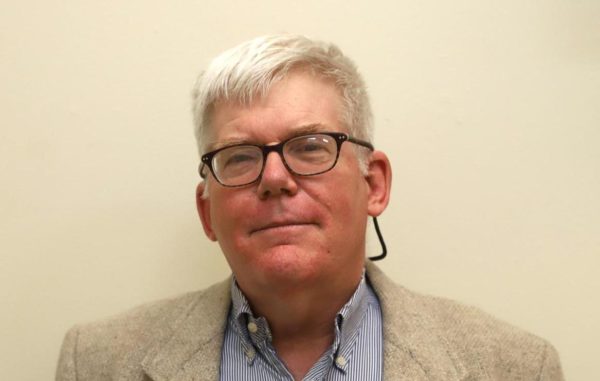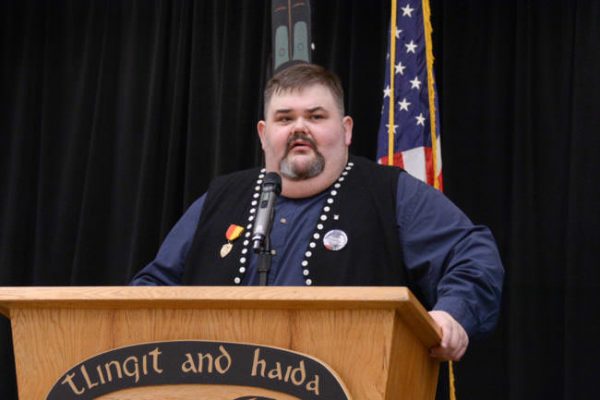One day last year, $13 million arrived in the bank account of Bethel’s tribe, Orutsararmiut Native Council.
“I was sitting at my desk and my then-chief accountant came to the door,” recalled ONC executive director Mark Springer. “And he had a piece of paper in one hand, and he was clutching his chest in his other.”
The money, which would soon grow to $14 million, was ONC’s distribution from a fund for tribes that Congress passed in the CARES Acts.
Amid pandemic anxiety, it was a godsend for remote communities struggling to keep COVID-19 at bay. In Alaska, 225 tribal governments split more than $300 million, in amounts ranging from less than $100,000 to more than $20 million.

For tribal administrators, the money was also a headache. They had a public health crisis on their hands and they suddenly had enough money to do a lot of good. But the rules for how it could be spent were murky at first, and originally the tribes had less than a year to spend it all. It was the same challenge for tribes all over the country: They had to figure out how to use it – wisely – or lose it.
Congress later extended the CARES Act spending deadline until the end of 2021. It gave tribal administrators time to catch their breath.
Now they are bracing for an even bigger pile of money from this year’s COVID relief bill – the American Rescue Plan. While the CARES Act was big, with an $8 billion fund for tribal governments nationwide, the American Rescue Plan has $20 billion for tribes. It’s not clear yet how much each tribe will get in total, but it could make the CARES Act look in retrospect like a mere dress rehearsal.
Last year, Springer and the tribe’s accountant were elated with their new account balance, though it was a lot of money for a tribe of about 3,500 members. Springer said the deadline pressure was immense.
“There was many, many a time,” he recalled, “when people would look right at me and say ‘Mark, are you going to spend all that money before December 30?’”
ONC first bought a ton of supplies and personal protective equipment, and a building to put it in. Springer says the tribe still has enough hand sanitizer left to fill a swimming pool. But back when stores had no Clorox or Pine Sol, he is proud that the tribe could provide.
“It feels real good when a family would call up and say, ‘Hey, we’re COVID-19 positive, and we need some cleaning supplies or PPE,’” he said. “And we’re like, ‘Yeah, we’ll be there.’”
Like a lot of tribes, ONC gave the bulk of its CARES money to its members – up to $5,000 per household. The spending has to go for pandemic-related needs, so the members filled out applications, to document what they needed help with. Ultimately, Springer said, the money went to the community at large, in Bethel, Anchorage, or wherever the member lives.
“It does have a lot of economic impact,” he said, “because we were sending checks to landlords. We were paying electric bills, and water and sewer bills, and fuel bills.”
Some tribes aimed to improve food security — by providing freezers, or ammunition and boat fuel to help tribal members hunt.
Several tribes spent money to fix up old houses or community buildings to serve as quarantine facilities so that anyone coming into the village could isolate for two weeks.
“And that’s worked, from what I’ve seen,” said Teresa Jacobsson, founder of the Alaska Tribal Administrators Association. “For those tribes that are doing that — I have one in particular that comes to mind — not one case of COVID since the pandemic started.”

The Treasury Department hasn’t announced how it will distribute all of the tribal government money in the American Rescue Plan, but the first billion will be divided equally among all tribes. That comes to $1.7 million apiece. That alone will be more than most Alaska tribes got from the CARES Act. One proposal is to give each tribe another $10 million. And still there would be billions left to distribute.
Richard Peterson, president of the Central Council of Tlingit and Haida Indian Tribes, believes he’s ready for the next big disbursement.
“I would say the CARES Act kept me up at night, so I’m kind of used to it now,” Peterson said.
His government got $20 million in CARES Act funding — more than any other Alaska tribe. Most of it was distributed to the households of its 32,000 members, about a third of whom live in Southeast Alaska. For instance, the tribe sent up to $500 per child to help parents with the expenses of pandemic homeschooling, like new laptops and broadband.
With the American Rescue Plan, Central Council might get two or three times as much as it got from the Cares Act. But this time the allowable uses are broader, and the spending deadline isn’t until the end of 2024. Peterson said he’s grateful to have more time to strategize for economic development and recovery.
“I want to honor the intent in which it was issued. I also want to make sure we’re doing the best by our citizens,” he said. “So yeah, it all keeps me up at night.”
Liz Ruskin is the Washington, D.C., correspondent at Alaska Public Media. Reach her at lruskin@alaskapublic.org. Read more about Liz here.





